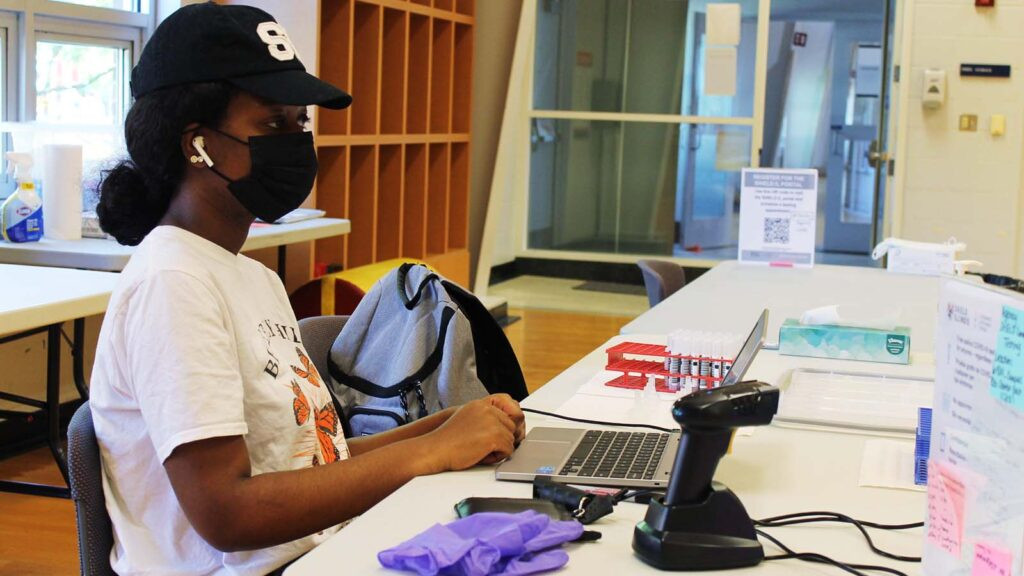COVID-19 emergency orders are coming to an end. Where does Illinois go from here?

Zainab Yusuff-Akimbo has worked as a COVID tester with SHIELD Illinois since March 2023. With the end of the emergency declaration, the SHIELD testing site at the University of Illinois will close May 26, though the organization says it may reopen at a new location in June. Emily Hays/Illinois Public Media
Pritzker announced in January that the public health emergency would end today, May 11, at the same time as the national public health emergency also comes to an end. The pandemic is still ongoing – according to the CDC, dozens of Illinoisans are still dying from COVID weekly, and thousands are still getting infected with it. Many more are reckoning with the effects of long COVID on their lives. But the end of the emergency declarations will mean drastic changes in not only how we track COVID, but also how we respond to it.
To unpack all of it, The 21st was joined by a professor of infectious diseases, the Illinois state epidemiologist, and a journalist that's been following the story.
GUESTS:
Dr. Vidya Sundareshan
Professor and Chief of Infectious Diseases, SIU School of Medicine | Medical Advisor, Sangamon County Department of Public Health
Jonah Meadows
North Shore Editor, Patch
Graham Briggs
State Epidemiologist, Illinois Department of Public Health
Prepared for web by Owen Henderson
Help shape our coverage on The 21st by joining our texting group and answering weekly questions. To join, text “TALK” to 217-803-0730 or sign up with your phone number below:

